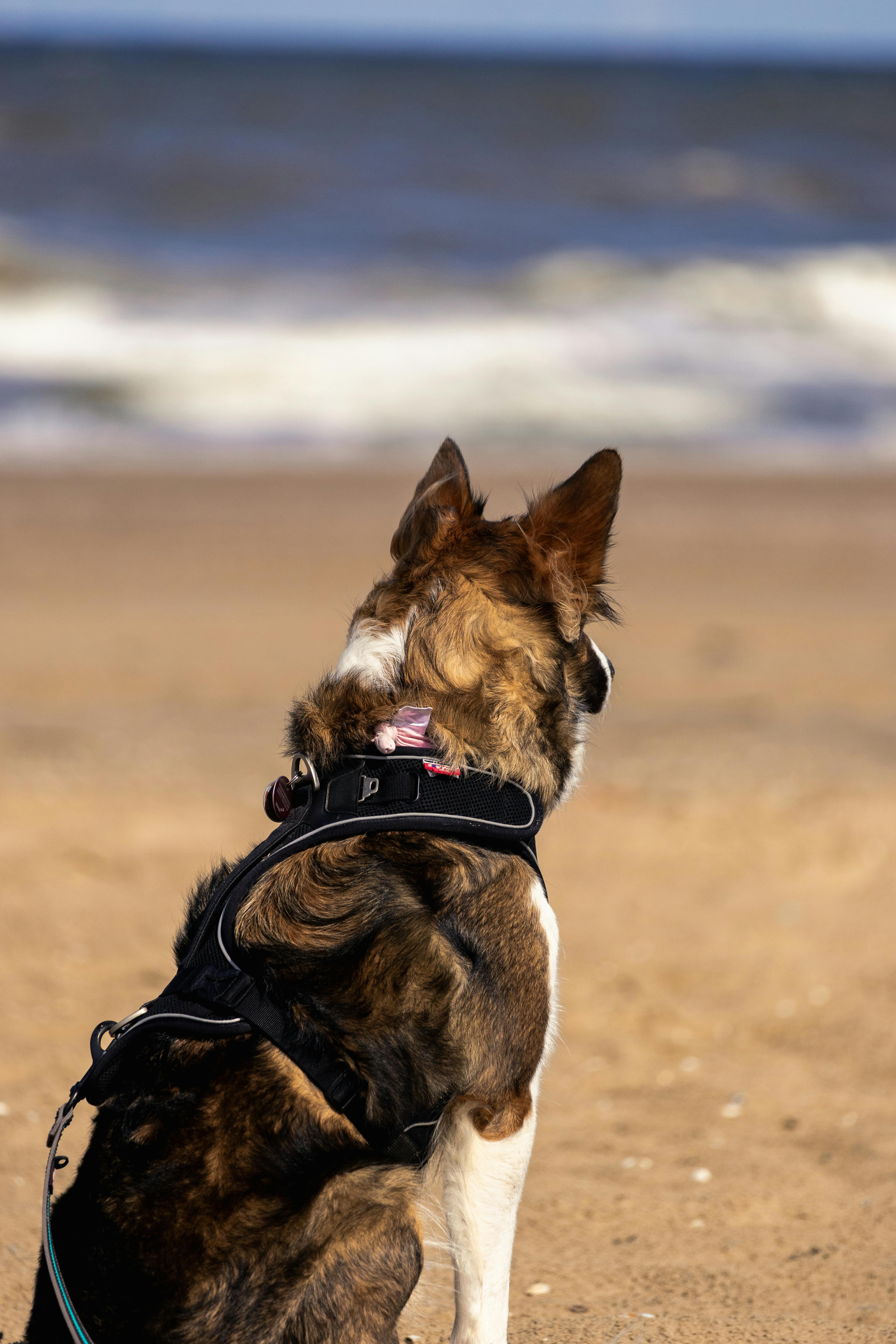Table of Contents
If you ever found yourself anxiously searching every street and corner for your beloved furry friend, worry no more! Discover the convenience of using a GPS tracker to find your lost dog in Singapore. With this innovative device, you can easily track your dog’s whereabouts in real-time and ensure their safety. Say goodbye to the days of endless worry and hello to peace of mind knowing that you can always locate your precious pet swiftly and accurately. Don’t let the fear of losing your dog overshadow the joy of being a pet owner – invest in a GPS tracker today!

Why Use a GPS Tracker for Your Lost Dog?
If you’re a pet owner, you know how heart-wrenching it can be when your beloved dog goes missing. The anxiety and worry can be overwhelming, and the search for your lost dog can become a daunting task. That’s where a GPS tracker comes in handy. Using a GPS tracker for your lost dog can provide numerous benefits and greatly increase your chances of finding them quickly and safely.
Benefits of using GPS tracker for lost dogs
A GPS tracker offers a multitude of advantages when it comes to locating your lost dog. Perhaps the most significant benefit is the ability to track your dog’s location in real-time. With a GPS tracker attached to your dog’s collar, you can monitor their movements and pinpoint their exact whereabouts through a smartphone app.
Additionally, a GPS tracker allows you to establish safe zones for your dog using a feature called geofencing. By setting virtual boundaries in specific areas, such as your home or a park, you will receive an alert on your phone if your dog leaves the designated boundary. This helps prevent your dog from wandering too far and getting lost in the first place.
Furthermore, GPS trackers for dogs often come equipped with a variety of alert and notification settings. You can receive alerts when your dog strays too far, when the battery is low, or even when your dog is engaging in excessive activity. These features give you peace of mind and allow you to take immediate action if needed.
How GPS trackers work for dogs
GPS trackers for dogs utilize global positioning system (GPS) technology to determine the exact location of your lost dog. The tracker communicates with satellites to obtain precise coordinates, and this information is then transmitted to your smartphone via a mobile network or Bluetooth connection.
Most GPS trackers require a subscription to a monitoring service, which enables you to access your dog’s location data. The smartphone app associated with the tracker allows you to view your dog’s location on a map, set up geofencing boundaries, and receive timely alerts.
To use a GPS tracker effectively, the device is typically attached to your dog’s collar. Some trackers are sleek and lightweight, designed specifically for comfortable wear. Once the tracker is secured, you can rest assured knowing that your dog’s whereabouts are being tracked and monitored.
Choosing the Right GPS Tracker
Selecting the right GPS tracker for your dog is crucial to ensure optimal performance and ease of use. Here are some factors to consider when choosing a GPS tracker:
Factors to consider when selecting a GPS tracker for dogs
1. GPS Accuracy and Range
Consider the accuracy and range of the GPS tracker. Look for a tracker with a high degree of precision in location tracking and a sufficient range for covering the areas where your dog may roam.
2. Battery Life
Check the battery life of the GPS tracker. Ideally, it should last long enough to provide reliable tracking for extended periods, especially if your dog tends to venture far from home.
3. Durability and Waterproofing
Ensure that the GPS tracker is durable and waterproof, as dogs may encounter various weather conditions and engage in active play outdoors.
4. Size and Weight
Choose a GPS tracker that is lightweight and doesn’t burden your dog. It should be comfortable for them to wear for extended periods without causing discomfort or irritation.
5. Subscription Plans and Costs
Research the subscription plans offered by the GPS tracker provider. Compare the costs and features to find the most suitable option for your needs and budget.
Top GPS trackers available in Singapore
Singapore offers a range of GPS trackers specifically designed for dogs. Here are some top options to consider:
1. Garmin Astro 430 with T5 MINI Dog Tracking Bundle
The Garmin Astro 430 is a popular choice for dog owners in Singapore. It offers a durable and waterproof design, a long battery life of up to 20 hours, and a high-accuracy GPS system. The T5 MINI Dog Tracking Bundle includes a collar and a handheld device to track and monitor your dog’s location.
2. Whistle Go Explore
The Whistle Go Explore GPS tracker is known for its comprehensive monitoring features. It tracks your dog’s location, activity, and even their health trends. With a battery life of up to 20 days, it is suitable for long-term tracking. The lightweight and waterproof design ensure comfort and durability for your dog.
3. Tractive GPS Dog Tracker
The Tractive GPS Dog Tracker is a compact and lightweight option that offers real-time tracking and location history. It provides customizable safe zone settings and enhances collaboration through its community feature. The tracker is waterproof and comes with a battery life of up to 5 days.
When choosing a GPS tracker, make sure to evaluate the features, specifications, and customer reviews to make an informed decision that meets your dog’s needs and your preferences.

Setting Up the GPS Tracker
Once you have chosen the right GPS tracker for your dog, it is essential to set it up correctly to ensure optimal functionality and performance.
Step-by-step guide to setting up a GPS tracker for your dog
1. Read the User Manual
Start by reading the user manual provided with the GPS tracker. Familiarize yourself with the device’s features, functions, and any specific setup instructions.
2. Charge the GPS Tracker
Ensure that the GPS tracker is fully charged before attaching it to your dog’s collar. Follow the manufacturer’s instructions for charging, as different trackers may have varying charging methods.
3. Attach the GPS Tracker to the Collar
Securely attach the GPS tracker to your dog’s collar according to the instructions provided. Ensure that it is snug and secure, but not too tight to cause discomfort.
4. Download the Smartphone App
Download the smartphone app associated with the GPS tracker from the App Store or Google Play Store onto your mobile device. Create an account and follow the steps to set up your profile and link the GPS tracker to your app.
5. Activate the Tracker
Activate the GPS tracker by following the instructions provided by the manufacturer. This usually involves turning on the device, connecting it to your smartphone app, and activating the tracking and monitoring features.
6. Test the GPS Tracker
Once the GPS tracker is set up and activated, take a moment to test its functionality. Map your dog’s location on the app and verify that the tracking is accurate. Additionally, test the geofencing feature by setting up a safe zone and ensuring that you receive the appropriate notifications when your dog crosses the boundary.
Ensuring proper fit and comfort for your dog
While setting up the GPS tracker, it is essential to pay attention to the fit and comfort of the device on your dog. Make sure the tracker is not too tight or too loose, as it should securely stay in place without causing any discomfort or irritation. Regularly monitor your dog to ensure that they are comfortable and not experiencing any issues related to wearing the tracker. Adjust the collar and position of the tracker if needed to ensure a proper fit.
Using the GPS Tracker to Find Your Lost Dog
Now that you have set up your GPS tracker, let’s explore how you can effectively use it to find your lost dog.
Tracking your dog’s location in real-time
The primary function of a GPS tracker is to provide real-time tracking of your dog’s location. With the smartphone app linked to the tracker, you can easily monitor their movements on a map. This allows you to track any sudden or unexpected change in their location, giving you valuable insights and helping you guide your search efforts.
Regularly check the app to ensure that the GPS tracker is providing accurate and up-to-date information. If you notice any discrepancies or irregularities, contact the tracker manufacturer’s support team for assistance.
Using geofencing to establish safe zones for your dog
Geofencing is a valuable feature offered by many GPS trackers. It allows you to create virtual boundaries or safe zones for your dog. By setting up these zones in areas where your dog frequently roams, such as your home or a local park, you can receive alerts on your smartphone if your dog crosses the boundaries.
To effectively use geofencing, ensure that the safe zones are appropriately configured in the app. Set the boundaries with a reasonable buffer to allow for your dog’s natural exploration, but not too wide that it diminishes the effectiveness of the feature. Adjust the settings as needed based on your dog’s behaviors and the specific environment.
Receiving alerts and notifications on your phone
GPS trackers often offer various alert and notification settings to keep you informed about your dog’s location and well-being. Take advantage of these features to stay updated on your dog’s activities and any potential concerns.
Configure the app to send you alerts when your dog leaves a designated safe zone, when the battery level is low, or when there is excessive activity, which might indicate unusual behavior or distress. These notifications allow you to take immediate action and address any issues promptly.
Remember to keep your smartphone nearby and keep it charged to ensure you receive these alerts in a timely manner.

Collaborating with the Community
In your search for a lost dog, harnessing the power of the community can greatly increase your chances of finding your furry friend. The following strategies can help you engage with local pet owners and gain support and assistance.
Harnessing the power of social media and online communities
In today’s connected world, social media platforms and online communities provide an effective means of spreading the word about your lost dog. Create posts on platforms such as Facebook, Instagram, and Twitter with a clear photo of your dog, a description, and relevant contact information. Ask your friends and family to share these posts to reach a wider audience.
Join local pet-related groups or forums where you can connect with other pet owners and post about your lost dog. Many communities have dedicated online groups that share information about missing pets and offer support in the search efforts.
Additionally, some GPS trackers have community features built into their associated mobile apps. These features allow you to collaborate with other tracker users in your area, increasing the chances of finding your lost dog through collective efforts.
Engaging local pet owners for support and assistance
Reach out to local pet owners, animal lovers, and organizations for support in your search for your lost dog. Attend local pet-related events, join dog parks, and visit popular walking areas to connect with like-minded individuals who may be able to offer guidance or join your search efforts.
Contact local veterinary clinics, animal shelters, and rescue organizations. Provide them with a detailed description of your lost dog and inquire about any reported sightings or potential resources they may have to assist in your search.
Remember to offer gratitude and appreciation to anyone who helps in your search. A community effort often yields the best results in finding lost dogs.
Working with Authorities and Animal Shelters
In addition to engaging with the community, it is crucial to involve relevant authorities and animal shelters in your search for a lost dog. Here’s how you can effectively work with them:
Reporting a lost dog to relevant authorities
Contact the local animal control agency or local law enforcement to report your lost dog. Provide them with a comprehensive description, including any unique identifying features, and share recent photographs of your dog.
Inquire about any specific protocols or procedures they have in place for lost dogs. Follow their instructions and provide any additional information requested.
Contacting nearby animal shelters and organizations
Reach out to nearby animal shelters, rescue organizations, and veterinary clinics in your area. Notify them about your lost dog and provide them with your contact information. Share a detailed description of your dog, including their breed, color, size, and any distinguishing features.
Ask if you can share flyers or posters at their facility and inquire about their policy regarding found dogs. Some shelters may keep a log of lost and found pets, increasing the chances of reuniting with your dog if it is found by someone else.
Follow up consistently with the authorities and shelters to stay updated on any potential sightings or leads.

Preventing Lost Dogs with GPS Trackers
Alongside using GPS trackers as a tool to find lost dogs, they can also serve as a preventive measure to ensure your dog does not go missing in the first place. Here’s how to utilize GPS trackers for prevention:
Using GPS trackers as a preventive measure
Even if your dog has never gone missing before, it is worth considering using a GPS tracker as a preventive measure. By having the tracker attached to your dog’s collar at all times, you can have peace of mind knowing their whereabouts are constantly being monitored.
In the event that your dog does go missing, the GPS tracker can significantly reduce the time and stress involved in finding them. With real-time tracking and the ability to establish safe zones, you can always stay one step ahead.
Teaching your dog to wear a GPS tracker
Introducing your dog to wearing a GPS tracker can be a gradual process. Start by acclimating them to the device without activating the tracking features. Allow your dog to sniff and investigate the tracker while offering treats or praise to create positive associations.
Once your dog is comfortable with the tracker, activate the tracking features and begin short training sessions. Use positive reinforcement techniques to reward your dog for wearing the GPS tracker and behaving calmly while wearing it.
Consistency and patience are key when teaching your dog to wear a GPS tracker. The goal is to make it a familiar part of their routine and ensure their comfort and compliance.
Long-Term Maintenance and Care
Proper maintenance and care of your GPS tracker are essential to ensure its longevity and optimal performance. Consider the following aspects when using and maintaining your tracker:
Charging and battery life considerations
Regularly charge your GPS tracker as per the manufacturer’s guidelines to ensure a reliable power source. Monitor the battery life and recharge it promptly when needed. It is advisable to have a spare charger or power bank on hand, particularly when going on extended outings with your dog.
Additionally, familiarize yourself with the estimated battery life of your GPS tracker. Be mindful of any fluctuations or decline in battery performance and consider replacing the battery if necessary.
Cleaning and maintaining the GPS tracker
Keeping the GPS tracker clean and well-maintained is crucial to ensure accuracy and functionality. Regularly inspect the tracker for any signs of damage, such as cracks, loose parts, or water infiltration. If you notice any issues, contact the manufacturer’s support team for guidance.
Clean the GPS tracker regularly, especially if it gets dirty or accumulates debris. Use a soft cloth or a mild cleaning solution recommended by the manufacturer to gently wipe the device. Avoid immersing it in water or using harsh chemicals, as this may damage the tracker.
With proper care and maintenance, your GPS tracker will be a reliable companion in keeping your beloved dog safe and secure.
![]()
Case Studies: Successful Dog Recoveries
GPS trackers have proven to be invaluable tools in reuniting lost dogs with their owners. Here are some real-life examples of successful dog recoveries made possible through the use of GPS trackers:
[Example 1]: Coco’s Great Adventure
Coco, a mischievous Golden Retriever, managed to escape from her backyard one sunny afternoon. Panicked, her owners immediately turned to the GPS tracker attached to Coco’s collar. Through the tracking app, they were able to locate her in a nearby park. With the help of the geofencing feature, Coco’s owners received an alert when she ventured beyond the safe zone. They quickly rushed to the park, following the tracker’s precise directions, and joyfully reunited with Coco within minutes.
[Example 2]: Max’s Daring Escape
Max, an energetic Border Collie, had a knack for escaping from his leash during walks. His worried owners sought a solution and decided to invest in a GPS tracker. One day, while on his usual walk, Max managed to slip out of his collar and bolted towards a nearby forest. Panicking, his owners opened the tracker app and were relieved to see Max’s location displayed on the map in real-time. They immediately contacted fellow dog owners in the area through the app’s community feature and organized a search party. With the combined efforts of the community and the real-time tracking, Max was found safe and sound within hours.
These inspiring stories illustrate how GPS trackers have successfully helped in the recovery of lost dogs. They highlight the importance of having a GPS tracker for your dog and utilizing its features to their full potential.
Alternative Tracking Methods for Lost Dogs
Although GPS trackers are highly effective in finding lost dogs, there are alternative tracking methods available. Here are some non-GPS tracking options to consider:
Physical Tags and Identification
Traditional methods such as personalized identification tags and microchipping offer a simple yet effective way of identifying lost dogs. Engrave your contact information on a durable identification tag and securely attach it to your dog’s collar. Microchipping is an electronic identification system that involves injecting a tiny chip under your dog’s skin. These methods rely on the finder of a lost dog to notice the tag or take the dog to a scanner-equipped facility to retrieve the owner’s information.
Bluetooth Trackers
Bluetooth trackers work on a close-range communication system between the tracker and your smartphone. Attach the small, lightweight Bluetooth tracker to your dog’s collar and pair it with a corresponding mobile app. You can then locate your dog by monitoring the Bluetooth signal strength on your phone. However, the range of Bluetooth technology is often limited, and it may not provide the same level of precision and real-time tracking as GPS trackers.
Radio Frequency (RF) Trackers
RF trackers operate on a similar principle to Bluetooth trackers but with a longer range. The tracker emits a radio signal that can be detected by the receiver unit held by the owner. As the owner gets closer to the lost dog, the receiver signals the proximity with increased frequency. While RF trackers can be useful in locating a nearby lost dog, they lack the accuracy and real-time tracking capabilities of GPS trackers.
It’s vital to weigh the pros and cons of these alternative tracking methods and choose the one that best suits your needs and the specific circumstances surrounding your lost dog.
In conclusion, using a GPS tracker for your lost dog in Singapore is a valuable and effective solution. It provides real-time location tracking, allows for the establishment of safe zones, and offers various alert and notification features. By selecting the right GPS tracker, setting it up correctly, and utilizing its features, you can significantly increase your chances of finding your lost dog quickly and safely. Remember to engage with the community, involve relevant authorities and shelters, and consider GPS trackers as a preventive measure. With proper maintenance and care, your GPS tracker will be a reliable companion in keeping your furry friend safe and secure.


